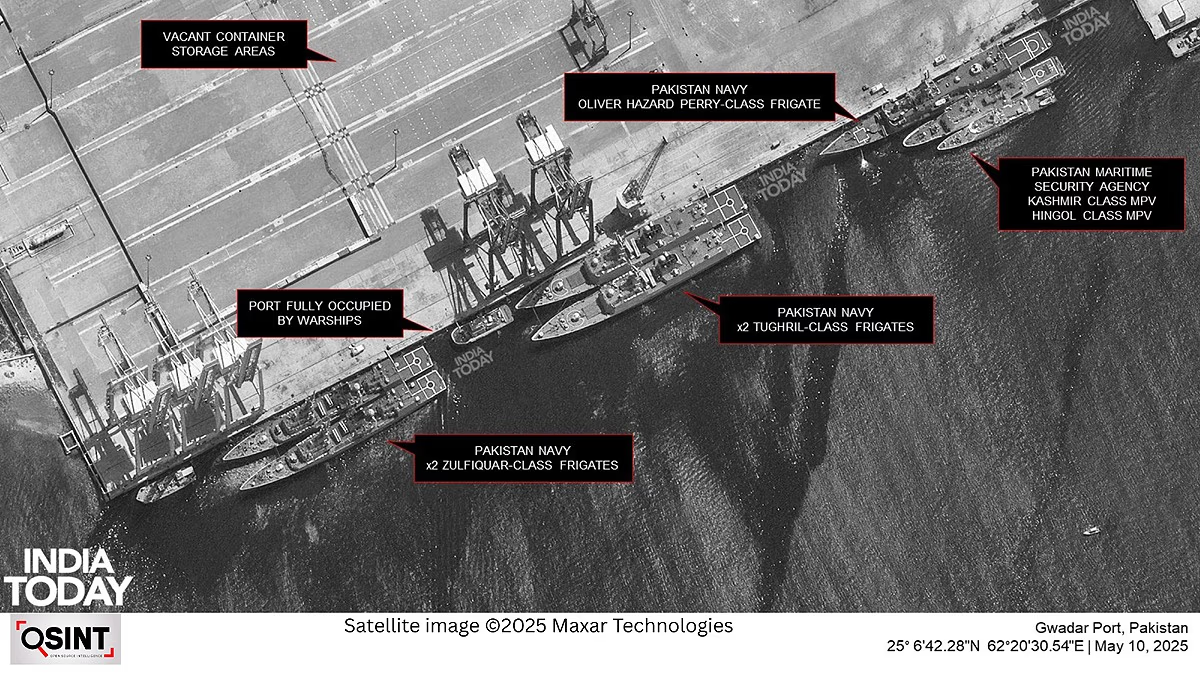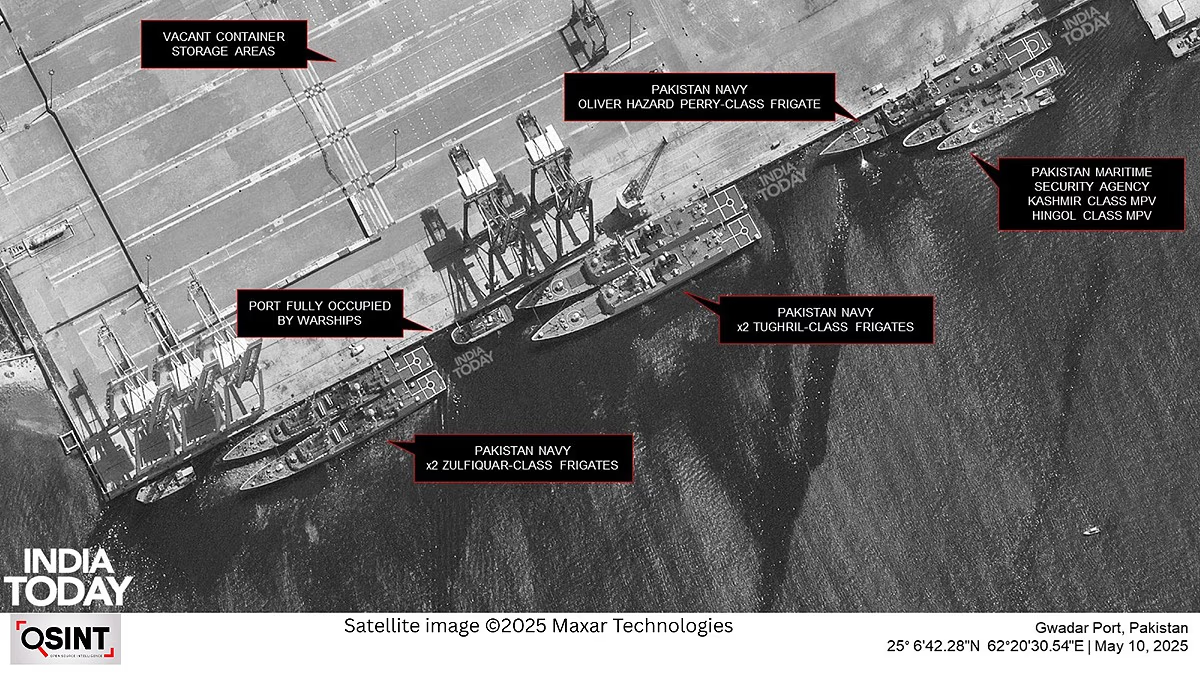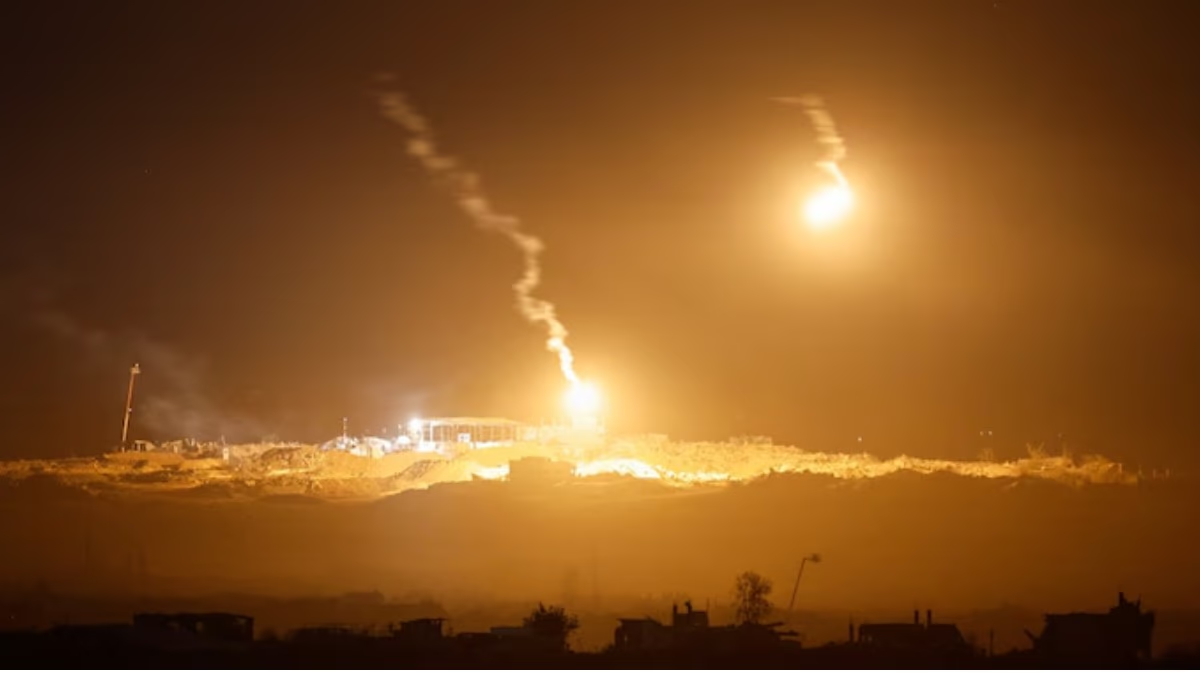On the nights of May 6th and 7th, Indian strikes targeted nine terror hubs in Pakistan and the Pakistan-occupied Jammu and Kashmir (POJK). Following the mission's completion, New Delhi informed Islamabad's Director General Military Operations (DGMO). However, Pakistan's leadership warned of strong retaliation. Yet, satellite images of Karachi and Gwadar ports analyzed by India's open-source intelligence (OSINT) team reveal Pakistan's naval defense was more passive during 'Operation Sindoor'.
Amidst escalating tensions, Pakistani Navy (PN) warships were moved from Karachi's naval docks to commercial terminals, as shown in satellite images. Meanwhile, other warships sought refuge at Gwadar’s western seaport, merely 100 kilometers from the Iranian border, avoiding an eastward move towards India.
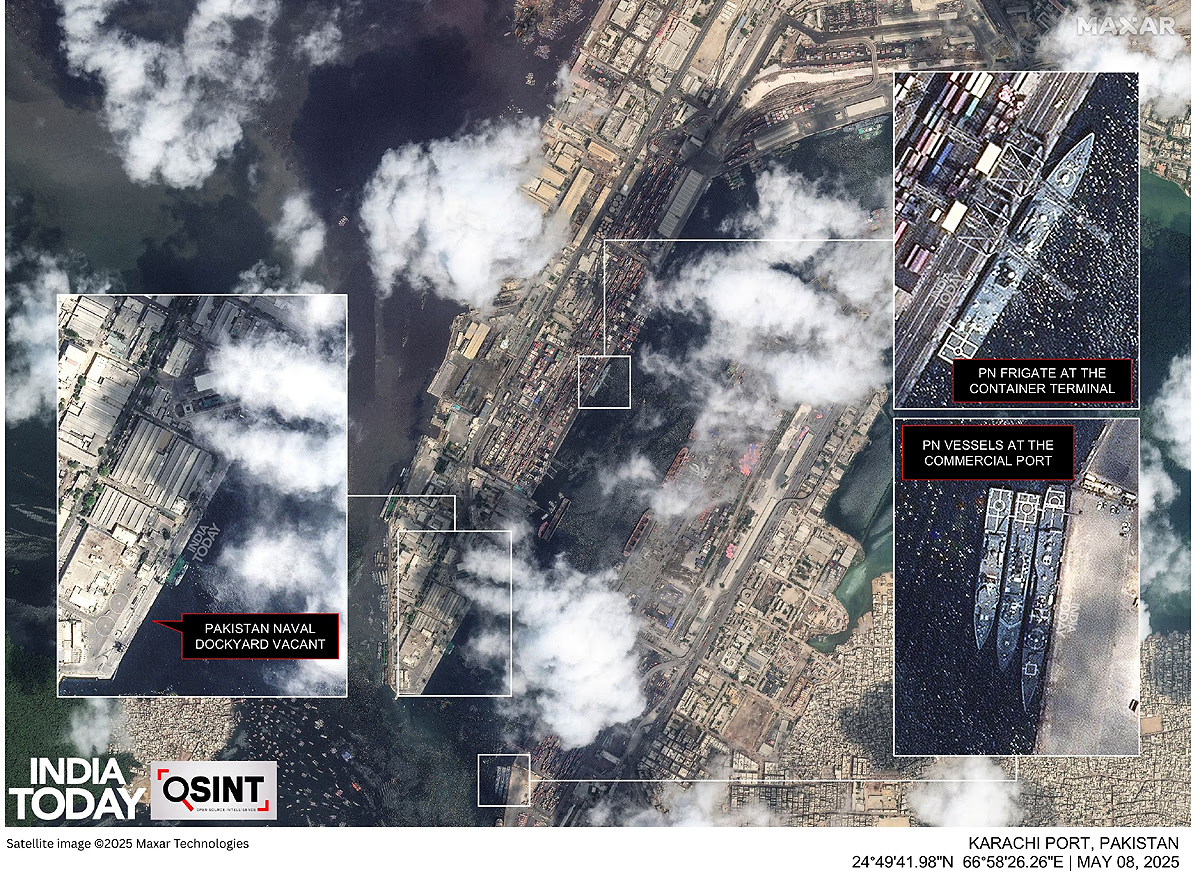
Source: aajtak
Read more:
Top military experts criticized Pakistan's naval preparedness during the crisis. Retired Vice Admiral S.C. Suresh Bangara, former Commander-in-Chief of the Southern Naval Command and participant in the 1971 daring Karachi port attack, stated that Pakistan's frontline warships should have been alert but instead were sheltered in ports, indicating low operational readiness.
He highlighted a pattern of Pakistani Navy ships parked at commercial terminals using civilian aircraft cover during operations, an evasive tactic against missile strikes. This reflects a tendency to risk civilian assets, Bangara told India Today, with military aircraft flying near commercial flights.
Read more:
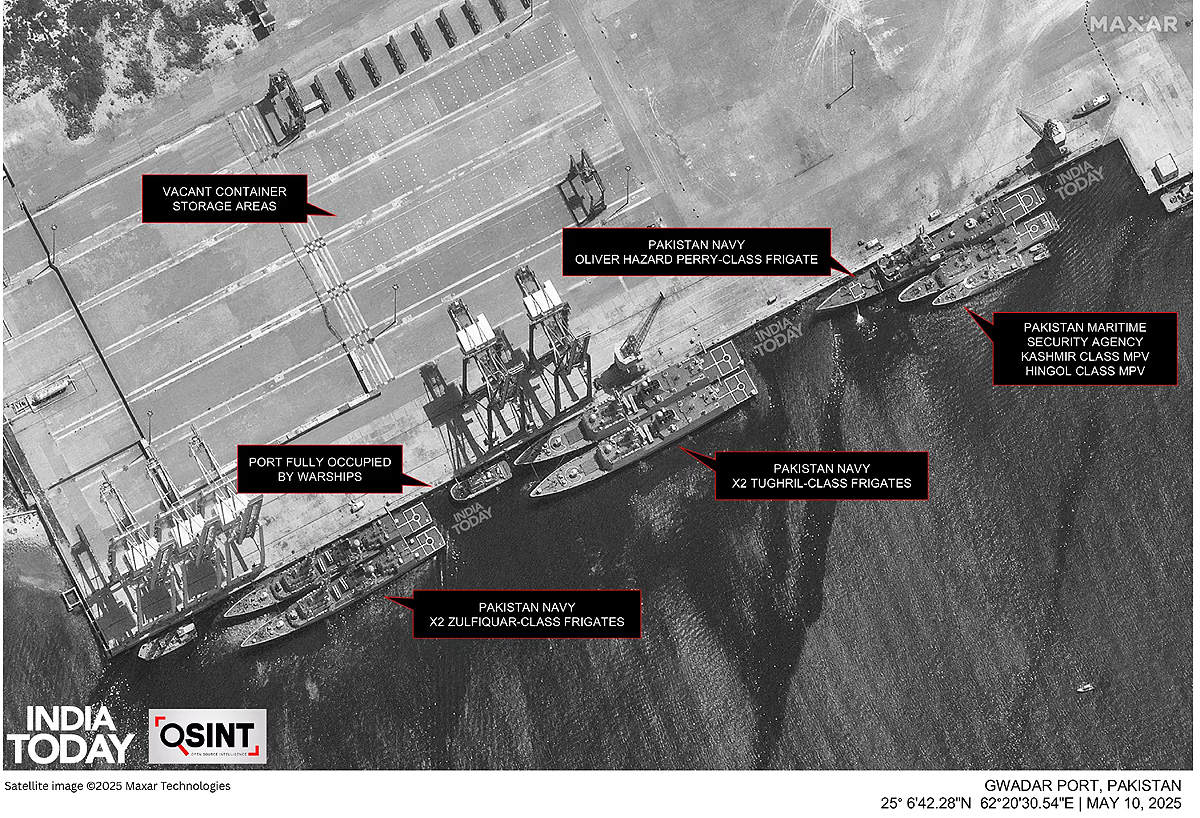
Source: aajtak
Pakistani Warships Seek Refuge Near Iran Border
Just six months before 'Operation Sindoor', the Pakistani Navy claimed it had inducted a new 'indigenously developed' P282 ship-launched ballistic missile, boasting a 350-kilometer range and high-precision. This test was shown in a military propaganda video featuring a Chinese-built Zulfiqar-class (F-22P) frigate launching the missile.
However, during 'Operation Sindoor' in May 2025, a different scenario unfolded. High-resolution commercial imagery from satellite company Maxar Technologies showed half of Pakistan's Zulfiqar-class frigates and other warships stationed in Gwadar, only 100 kilometers from the Iranian border.
Read more:
Gwadar port, often deemed the jewel of the China-Pakistan Economic Corridor, recently became a temporary naval refuge. During 'Operation Sindoor', satellite images indicated by May 10th, its container storage area was empty, but military ships crowded its docks. This included two Zulfiqar-class frigates, two large Tughril-class frigates, the Navy’s sole US-manufactured Oliver Hazard Perry-class frigate, and two maritime patrol vessels.
Retired Vice Admiral Bangara commented, "Placing frontline ships in Gwadar, which had no commercial activity, was a mistake, making them easily visible. Their submarines seemed to be their only strength at sea.
India's Strength and Pakistan's Pressure
Geo-intelligence researcher Damian Symon of Intel Lab noted, "During 'Operation Sindoor', India's first indigenous aircraft carrier, INS Vikrant, made its debut wartime deployment, highlighted by the Pakistani Navy, illustrating New Delhi's pressure. Pakistan dispersed its navy, moving ships to civilian docks as it braced for a potential Indian assault on Karachi.
Read more:
Karachi's Commercial Terminals Host Warships
Previously, Karachi's naval docks were unusually vacant, while May 8th satellite images showed warships at commercial cargo terminals. The imagery, partially cloud-covered, revealed at least four PN ships near commercial ports and container terminals. This included PNS Alamgir, a Babur-class corvette, and a Damen Offshore Patrol Vessel (OPV) beside cargo ships where containers were loaded and unloaded. Another naval frigate was positioned at the container terminal instead of a naval dockyard.
Bangara remarked, "Pakistan Navy plays a minor role in their army-centric structure. India meticulously planned joint operations and achieved all 'Operation Sindoor' objectives without launching a single missile from the sea. Our powerful naval strike could have decimated their maritime resources, as the PAF airbases suffered on August 10th. Joint operations preserve ammunition for prolonged engagements. Remember, 'Operation Sindoor' has only paused.
New Use of Gwadar
Simyon noted Gwadar's altered usage, "This pressure coincided with many of Pakistan's submarine branch vessels being out for repairs, lowering the maritime threat. This increasing pressure turned Gwadar—a long-struggling commercial port—into a naval retreat base. Its 600-meter docks housing warships and offshore tankers provided Islamabad a robust fallback from Karachi.
India's Preparations
Previously, the Indian Navy expressed readiness to attack Karachi if necessary. Vice Admiral A.N. Pramod stated in a joint media briefing in May 2025 that our forces held a strong position in the Arabian Sea, ready to strike Karachi by sea and land at a chosen time.
